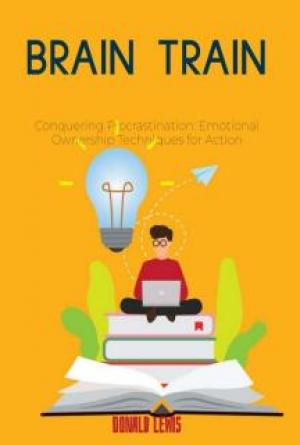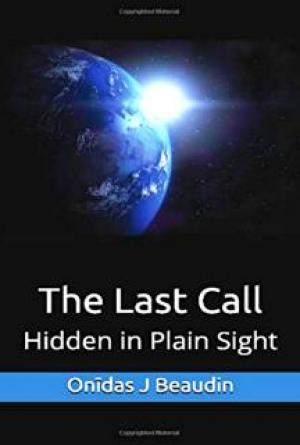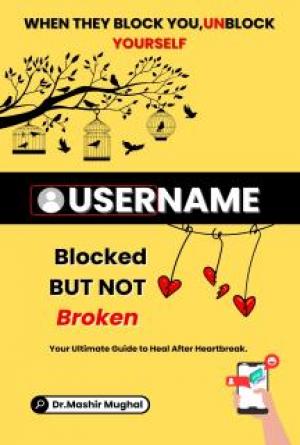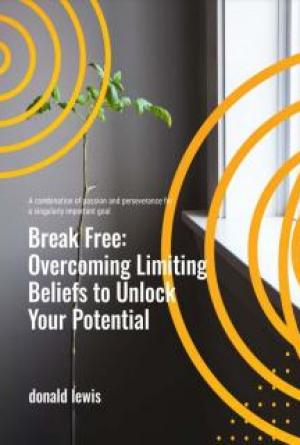Chapter 13
THE NEW WARRIOR
MASTERING THE ART OF BUDO
Did you know that modern day Japanese Karate comes from the Art of Budo? Budo, or Bushido, was an ancient warrior's code, which meant "the way to stop the sword." In wartime, people had to protect themselves from being hurt by the sword, which was the weapon commonly used to kill people.
Many people who practiced the Martial Arts were peaceful and did not want to hurt other people, so they practiced forms of weaponless combat in order to be able to defend themselves against attack. Like you and me, they also felt that defense was not enough; they wanted to find a way to end conflict so people would no longer get hurt. So they expanded the meaning of Budo to mean "to stop conflict." They were serious about ending all conflict in their lives and living without violence.
These early nonviolent Martial Artists understood that there were many forms of conflict and violence. They raised their children nonviolently by showing them what they felt was hurtful to other human beings, as well as to other living crea-tures. They felt a great love for nature and all living things, and felt that it was wrong to kill animals for food or sport.
They became what we call today "vegetarians," people who don't kill or eat the flesh of animals. They ate natural foods such as grains, vegetables and fruits, and were very healthy.
These earlier nonviolent Martial Artists have helped 77



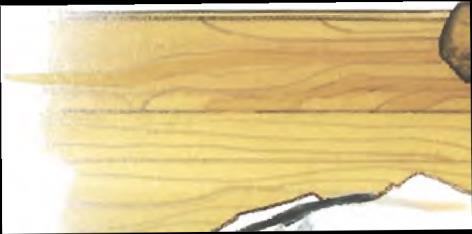
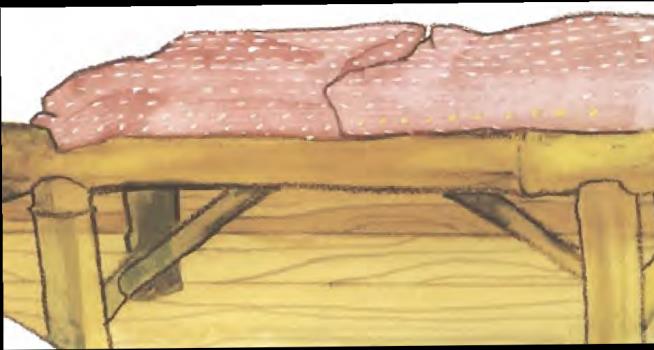






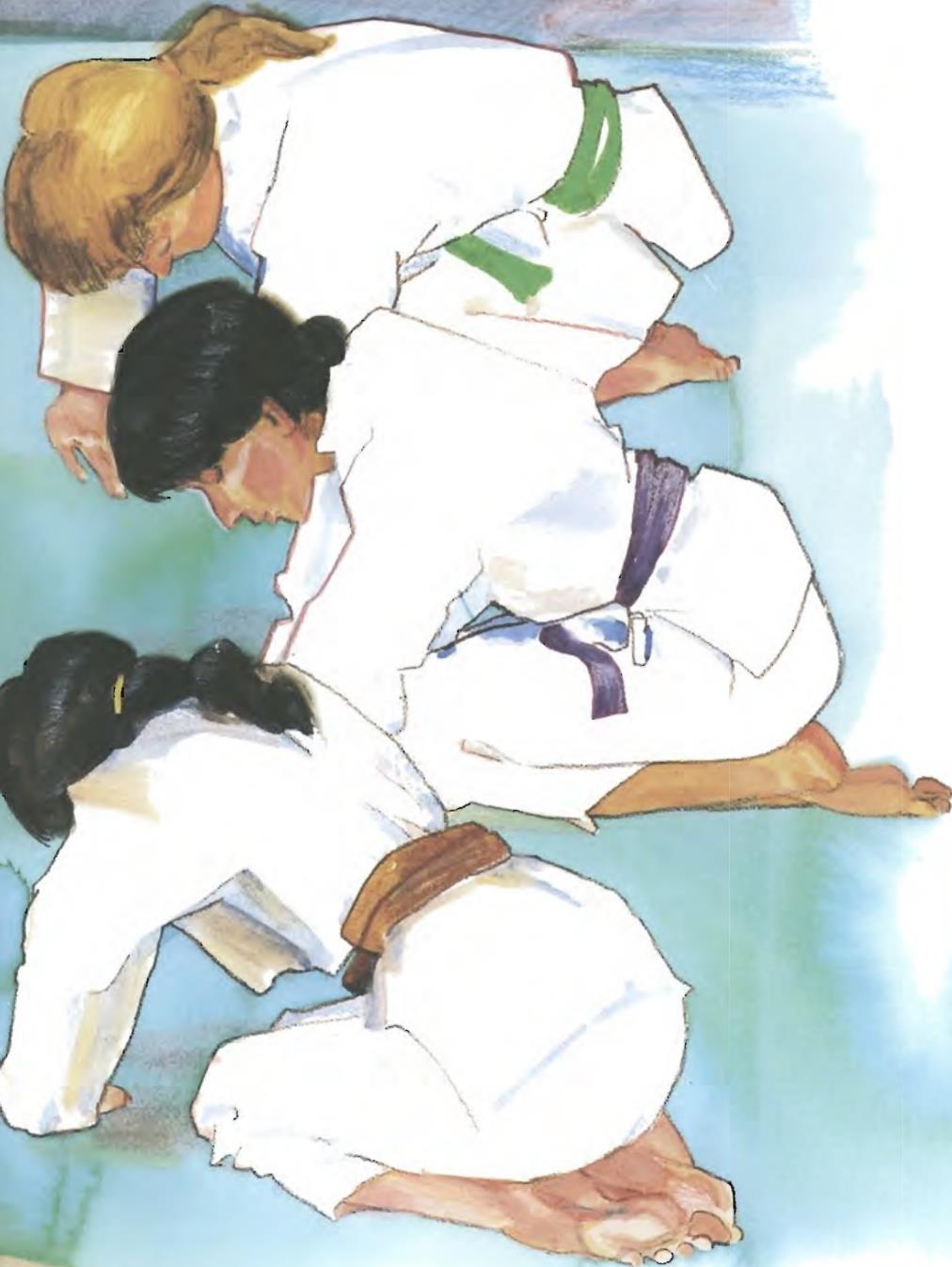
In bowing you forget
yourself. Then you can
greet one another
because you are not the
most important.


today's Martial Artists understand the real purpose of Budo -
which is to stop conflict. We live in a terribly violent world with constant wars. Today we need a "new warrior," one dedicated to peace. We must question why conflict and violence exist and how to remove them from our lives. We must ask ourselves, isn't it still important to not hurt animals for any reason, not to kill them for food or sport? Isn't it important to live without weapons, even toy weapons? Isn't it possible that playing with war toys when you are young can lead to a desire to use real guns in real wars when you become an adult?
What types of conflict are you aware of in your life or in the lives of people you know?
I have seen my Mother in conflict over
I have seen my Father in conflict over
My best friend has had a conflict with
The most conflict I have in my life is
Ask yourself what you think each of those people, including yourself, could do to become a peaceful warrior and bring peace to their life and to the lives of others. What steps do you think could be taken in your home, at school, in your Dojo, and in the community to stop conflict?
By thinking through these questions and taking the time to come up with some answers, perhaps discussing them with friends and family, you are already in the process of becoming a more peaceful person. Keep in mind that a real master of Karate not only masters the physical act of self-defense, but far more importantly, masters the art of living a healthy, happy, peaceful life, free from conflict.
.
. ..
WR:" ' :.
.
:- __
I�r,
. \


A SPECIAL NOTE TO THE YOUNG READER
Thank you for reading this book. I hope that you have enjoyed it and that it helps you learn more about yourself and what it means to
"solve conflict nonviolently." I wish you well in your practice of the Art of Karate. If you don't practice Karate, I hope that this book will help you anyway.
If you would like to write me and share your stories about how Karate has helped you, especially how you got out of conflict through nonviolent ways, I would greatly appreciate it. This will help me write other books for young people. Maybe one of your real life stories could help someone else.
The last section of this book is written for adults so they too can understand the importance of solving conflict nonviolently through the Art of Karate. You can read their section if you want to. If you need the assistance of an adult to do so, be sure to ask. If you would rather stop here and think over what you have just read, that's okay too. Either way I thank you again for being such a good listener.
With affection and respect,
�
\����
Terrence Webster-Doyle, Sensei
I leave you with this one last observation,
"Drinking Green Tea
I stopped the war."
-Paul Reps
Do you understand? Let's talk about it.
81

A Message to Parents, Teachers and Counselors
This is an important message to anyone who works or lives with young people. The fundamental intention of this book is to teach young children how to cope with conflict in healthy, nonviolent ways.* This is not a book that teaches self-defense. It teaches young people to: 1. Gain an understanding of the causes of violence 2. Develop the skills to resolve conflict nonviolently 3. Have the confidence not to fight The idea of teaching conflict resolution skills to young people is vitally important. Yet it is almost totally overlooked. As a parent of five daughters, an educator/psychologist and someone who has worked in juvenile delinquency prevention, I am acutely aware of the violence our children are exposed to every day. I am also aware that there is little being done to help young people cope with the fight or flight situations they are confronted with at their schools and in their communities.
There is a tremendous amount of violence in our world, as anyone can see - on television, in films, newspapers and magazines -
and it is
all too often portrayed as an heroic cultural ideal, depicting fighting as the honorable solution to conflict. Violence is epidemic. It touches every life.
The threat of nuclear war is a very real possibility. Our children live in a world of constant violence, perhaps the most violent time in the history of mankind. According to recent statistics, a violent crime occurs every 25
seconds. This is not a doomsday statement but a very real fact! In the glaring reality of global violence and in an age in which we have put a
*There are many more benefits in learning Karate. Coordination, strength, agility, timing, and flexibility are excellent physical fitness benefits not only for toning the body but, as research has shown, also helping the young person enhance intellectual, academic learning. Karate is also an exciting and challenging recreational sport, one that empha-sizes individual accomplishment within a group context.
82
man on the moon, we still carry on as if there is nothing we can do.
It seems to me that what we need to do first is see that we parents, teachers and counselors can deal with the problem of violence especially when it comes to our children. The myth that only the authorities can deal with this issue is our biggest block to taking action ourselves. The second thing we need to do is teach ourselves and our young people the necessary skills to resolve conflict. In order to learn these, we need to understand what causes our conflicts and how we can fundamentally deal with them.
The title of this book, Facing the Double-Edged Sword, is a metaphor for the fight or flight survival mechanism in the deeper recesses of our brains. You may have experienced this fight or flight mechanism at one time or another in response to a threat to your survival. If you have a cat or dog, you have seen your pet react when confronted by a threat. The animal reacts according to this built in survival mechanism by either attacking (fight) or running (flight), depending on the specific conditions.
The human fight or flight mechanism reacts in the same mode as that of the animal in certain circumstances. When, for instance, a young person is confronted by a bully on the playground, the victim usually has only this flight or fight option available to him or her. The brain relies on this more primitive mode of dealing with hostile aggression because it hasn't been shown anything else. Adults generally only reinforce this method of dealing with conflict by telling the young person to either fight or "turn the other cheek."
If we are truly concerned about our childrens' welfare as they grow up we must take the issue of conflict resolution seriously and offer our children better options. If we want to bring about a safe and peaceful world we must help them develop alternative methods to our instinctual primitive reactions to threat. The terrible violence that is going on in the world today, the thousands of years of wars we've suffered, I believe, is stimulated at least in part by our primitive fight or flight animalistic behavior.
83
We must help young people understand and creatively, non-destructively deal with conflict. We educate young people in math, science, language, history, sports, and a multitude of other subjects. Why not conflict resolution?
A few concerned adults who have addressed this issue of teaching conflict resolution to young people have made good beginnings. Some have tried to show young people intellectually how to get out of conflict.
For example, some teachers have demonstrated ways of talking one's way out. Others have taught children to defend themselves physically in the hopes that this would deter a bully's attempt to hurt them. What we rarely have done is to combine the two - the intellectual with the physical. Together, they provide a holistic approach to solving conflict.
Many people resist teaching young children to defend themselves since they think that violence only breeds violence. If self-defense is all that is taught then the outcome may well be only violence. But if the young person is also taught nonviolent alternatives to conflict (through role-playing) then the child is capable of coming up with more creative ways to deal with a potentially hostile situation.
This is how it works: The skills of physical self-defense give the young person confidence. This confidence assures him or her_ that he or she can handle a potentially violent situation. The acquisition of these skills circumvents the primitive fight or flight mechanism. If, in a potentially threatening situation, a child has been taught to defend him or herself, the message to the brain does not immediately stimulate an animalistic reaction. Instead of fighting or running away one can pause in readiness. In the "pause" there is a moment of calm, an abatement of the fear that stimulates fight or flight. Confidence lessens fear and deacti-vates this automatic survival mechanism.
In this "pause" there is room to deal with the potential threat in new ways. This is where teaching the young person nonviolent alternatives and conflict resolution skills comes into play. The mind that is not caught up in fear and therefore not caught up in the primitive fight or flight reaction, can think more clearly and intelligently and will come up with 84
other methods of dealing with the problem that will open the possibility of ending conflict before it starts. The teaching of physical self-defense skills and intellectual conflict resolution skills together is organic. One is de-
pendent on the other.
There is no doubt that the effects of these skills taught in youth will naturally have an effect on adult life. Understanding the fundamental causes of conflict as well as learning conflict resolution skills at an early age will also increase the chance of young people entering adulthood and approaching life with a more intelligent and nonviolent understanding of relationship. A young person taught to understand and deal with conflict knows instinctively that violence is not an acceptable way to solve the problems of relationship.
There is another issue related to the "fight or flight" reaction which is the mind's inability to distinguish between a physical or psychological threat. Holl yw ood has exploited Karate and the other martial arts by portraying them as lethal fighting.* This notion makes for a sensational appeal to our more primitive human responses. All these violent images
psychologically stimulate a fight or fiight reaction even though the threat is
not physically present. In other words, the media's exposure of violent images triggers the mind/body's response as if the image were real- as if the image were an actual physical threat to our well being. With the constant stimulation of violent "life threatening" images, the brain is constantly on alert, using up a tremendous amount of energy to defend against a ghost of a threat- one that simply isn't there. Watching constant violence puts our "fight or flight" mechanism in a constant "on"
mode, causing our bodies to continually produce chemical reactions to combat an invasion that in reality is not taking place.
*According to recent information, there are over 2,000,000 young people actually taking Karate in the United States alone. There are millions more that have been exposed to Karate through movies, magazines, and television. At public and private schools for which I've done demonstrations, almost all of the young people have seen Karate, but mostly the violent, Hollywood versions.
85
This response to such visual presentations creates tremendous fear.
We are always on guard. It is not unusual to see global paranoia of"The Enemy." This feeling that everyone is out to get us, that we need to be constantly on guard, reinforces the feeling of isolation and separatism and our seeing ourselves as the psychological entities being threatened. "I'm
in danger!" is the psychological response we get when images of violence create the fear of a real imminent physical threat. When the brain receives a psychological image of violence and interprets it as an actual physical threat, it reacts in a personal, psychological, defensive manner.
It has a psychological flight or flight reaction.
In an actual combat situation when confronting a real danger to one's physical well being, one would need to actually fight or actually flee from the potential harm. But when the threat, via violent images, is merely psychological, then a physical fight or flight response is not appropriate.
When this occurs, the brain goes through a mock fight or flight, playing out the scenario psychologically, which has the effect of producing height-ened fear because the tension created by the supposed threat cannot be alleviated. This interpretation by the brain of greater fear provides even more justification that"I am being threatened."
This building up of individual fear develops and maintains the sepa-rate self, the psychological entity called the"ego." As I see it, the ego is made up in part of psychologically defensive reactions to threats, and through time and reinforcement develops its defensive self-protective positions of"I Versus You, Me Versus Them." In order to create and sustain itself, its self-protective power so to speak, it identifies with other more powerful images, that of the group, the nation, the culture, in an attempt to fortify its own like-minded core of defenses, which just leads to group fear, national isolation, and cultural conflict.
Thus, it seems to me that the brain's response to violent visual images portrayed on television, in the movies and in magazines can have a tremendously dangerous effect on behavior. I feel they are helping to create and sustain violence worldwide.
I'm not asking anyone to accept these statements as "truth," but
86
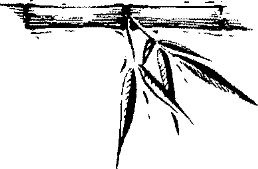
rather as a working hypothesis, an insight into the nature and structure of violence. Each of you must decide for yourself if what has been said here is true or not. If it is true, then we have good reason to pursue in-qui ry into this urgent situation and develop contexts in which we can observe this actuality as it occurs. We must, in my view, not only teach children about conflict resolution at the symptomatic level but delve much deeper into what creates and sustains violence. Symptomatic resolving of conflict is reform and does not address the problem fundamentally.
In my view, Karate training is a unique way to help us understand violence and therefore can be a unique and successful way to deal intelligently with conflict resolution provided that both physical and mental skills are taught holistically- that is, together.
The need to help our children learn new solutions to violence is of paramount importance. As a parent, I feel it necessary to teach these skills in school, as well as in the community. It should be an integral part of the curriculum. Surely this issue dominates our lives more than, say, math or science alone. As a teacher, I know that it can be incorporated within the daily operation of classroom activities. Having been a school administrator, I know that programs combining a healthy discipline in Martial Arts training accompanied by developing nonviolent alternatives can be incorporated into the overall school structure. I am currently co-director of a private school that does exactly this. We use this approach in our school. And it works! Our teachers and parents see the need to teach conflict resolution, and understand how vital this need is. They know that children can be taught to successfully cope with violence in creative ways, because they have seen it happen.
If you are interested in more information on what we do, please feel free to contact us (our address is at the end of the book). Please let us know how your child or children responded to what I have written. This will be of great help to me in writing future books for young people on conflict resolution.

About the Author
Terrence Webster-Doyle began his study of the martial arts in 1961, earning his black belt in the Japanese style of Gensei Ryu Karate from Sensei Shigeru Numano in 1967. Now a sixth-degree black belt, he is founder and director of the Martial Arts for Peace Association in Middlebury, Vermont.
Dr. Webster-Doyle earned his doctorate in health and human services and has taught at the secondary, community college, and university levels in education, psychology, and philosophy. He has worked in juvenile delinquency prevention and has developed conflict education programs for young people, combining principles from education, psychology, and the martial arts. Dr.
Webster-Doyle's numerous books on martial arts, education, and social issues for young people and adults have won many awards for excellence.
About the Atrium Society
Visit
www.atriumsoc.com
atriumsociety@gmail.org
About the Artist
Rod Cameron was born in 1948 in Chicago, Illinois, but has lived in southern California most of his life. He studied painting with "Dick and Jane" illustra-tor Keith Ward, and at the Otis/Parson School of Design in Los Angeles.
In 1985, Rod Cameron founded East/West Arts, Inc., a design and art stu-dio in Ventura, California. His work has been shown on major network tele-vision and has received awards for its illustrative excellence.

International Praise
for Dr. Terrence Webster-Doyle's Work
• Dr. Webster-Doyle has been awarded the Robert Burns Medal for Literature by Austria's Albert Schweitzer Society, for "outstanding merits in the field of peace promotion."
• "Dr. Webster-Doyle takes the reader beyond the physical aspects of Karate training to a discovery of self. These books are an asset to Martial Arts instructors, students and parents of all styles, ages and rank levels."
-Marilyn Fierro, 5th Dan
Owner and Chief Instructor
Smithtown Karate Academy, Smithtown, NY
• Winner of Benjamin Franklin Awards for Excellence in Independent Publishing
• "These topics are excellent and highly relevant. If each of the major countries of the world were to have ten Drs. Webster-Doyle, world peace is guaranteed to be achieved over a period of just one generation."
-Dr. Chas. Mercieca, Executive Vice-President International Ass'n of Educators for World Peace NGO, United Nations (ECOSOC), UNICEF & UNESCO
• Acclaimed at the Soviet Peace Fund Conference in Moscow and published in Russia by Moscow's Library of Foreign Literature and Magistr Publications.
• "Every publication from the pen ofthis author should make a significant contribu-tion to peace within and without. Highly recommended!"
-New Age Publishers and Retailers Alliance Trade Journal
• Why is Everybody Always Picking on Me?-cited by the Omega New Age Directory as one of the Ten Best Books of 1991 for its "atmosphere of universal benevolence and practical application."

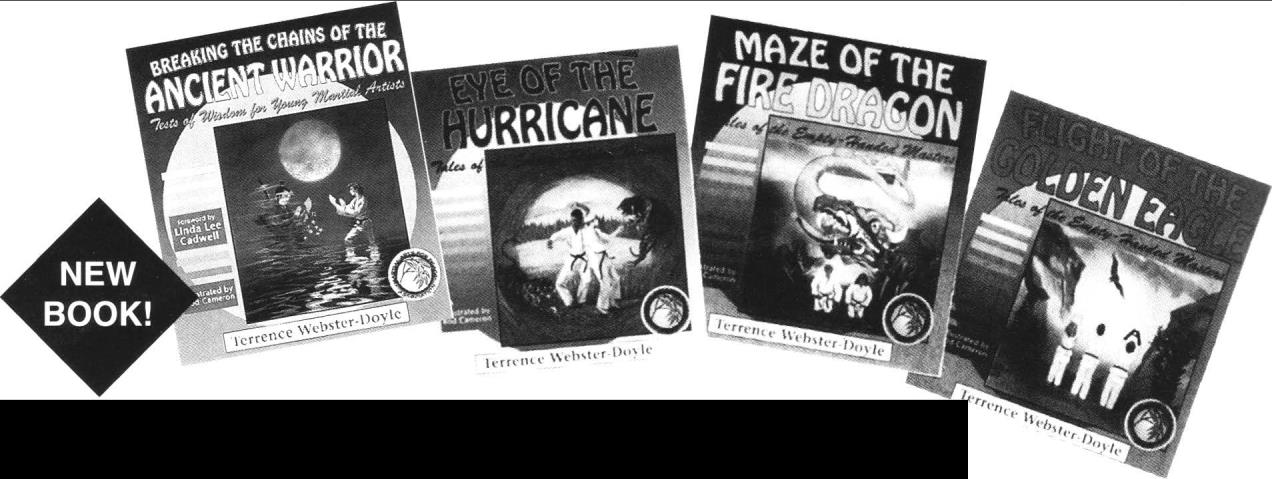
Tales of the Empty-Handed Masters
Classic Martial Arts Books for Young People
by Dr. Terrence Webster-Doyle
The "Martial Arts for Peace" books offer young people a view of the Martial Arts as they should be seen: as a healthy and humane activity that can help them to live with sensitivity and intelligence in their daily lives.
Can you discover the secret
of the Empty-Handed Masters?
BREAKING THE CHAINS OF THE ANCIENT WARRIOR. This exciting new book depicts the profound mental and physical training of martial arts students. Through classic martial arts stories and the author's own experience, this book teaches the most important lesson ofall: Respect.
EYE OF THE HURRICANE embarks on the journey into the heart of"Empty Self," the path of self-confidence and nonviolent inner power.
MAZE OF THE FIRE DRAGON travels further with symbolic challenges that lead the reader to understand his or her real strengths.
FLIGHT OF THE GOLDEN EAGLE offers insights for understanding conflict, guiding the martial artist to live with awareness and intelligence.


























